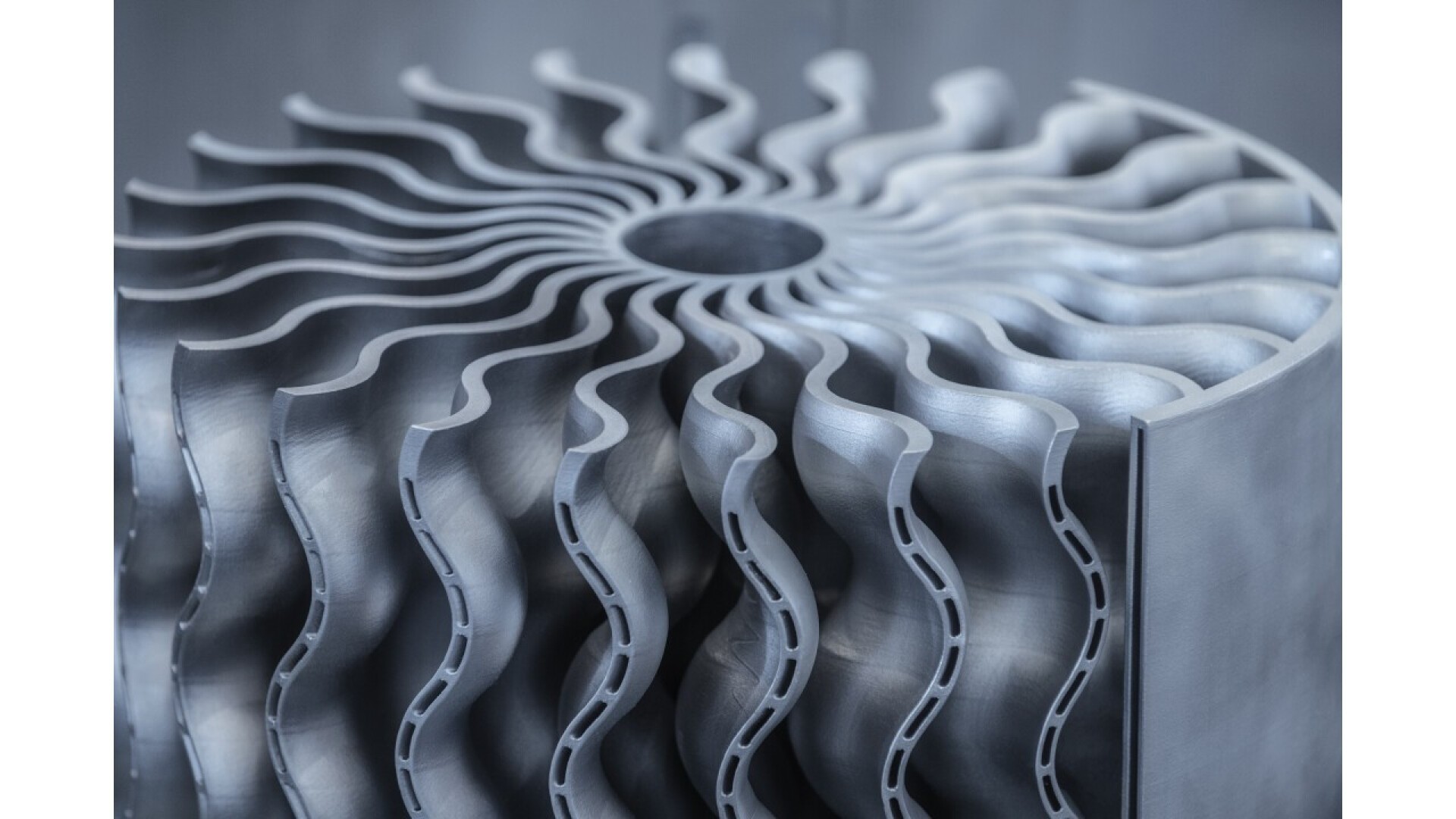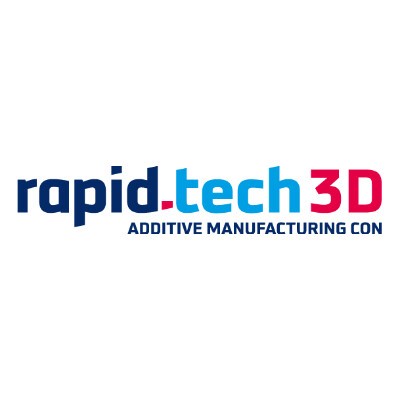3D printing in mechanical engineering
From prototypes to complex components, additive manufacturing enables faster development processes, cost savings and innovative designs. Discover the opportunities this technology offers for mechanical engineering.
3D printing is revolutionizing mechanical engineering, opening up unprecedented possibilities in design, prototyping and manufacturing. This innovative additive manufacturing technology enables engineers and designers to create complex components directly from digital models. This significantly speeds up the development process, as prototypes and final products can be produced faster and more cost-effectively than traditional methods. 3D printing in mechanical engineering not only helps optimize product designs by enabling parts to be produced with complex geometries or internal structures that would be difficult to create using conventional methods, it also contributes to sustainability by reducing material waste and increasing production efficiency. By using 3D printing, companies can shorten their time to market, reduce material and inventory costs, and enjoy greater design flexibility. This process is a game changer for mechanical engineering, pushing the boundaries of traditional manufacturing methods and paving the way for innovative designs and applications.
From prototype to production: The versatile use of 3D printing in mechanical engineering
One of the primary applications of 3D printing in mechanical engineering is the development and production of prototypes. This technology enables engineers to create physical models of their designs quickly and cost-effectively. Prototypes produced using 3D printing can be used for functional and fit testing, which significantly speeds up the development process. By directly converting CAD models into physical objects, errors can be identified and corrected at an early stage, which leads to a reduction in time to market. Likewise, 3D printing in mechanical engineering enables the production of components that would not be possible or would only be possible with great effort using traditional manufacturing methods. This includes parts with complex geometries, cavities and overhangs. 3D printing offers an efficient and flexible production solution, especially in small series production or for customized or specialized components. This is particularly advantageous in industries such as aerospace, automotive and medical technology, where customized or performance-oriented components are in demand.

In addition, 3D printing in mechanical engineering plays an important role in the production of tools, fixtures and assembly aids. Additive manufacturing enables the rapid and cost-effective production of tools specifically designed for specific tasks or projects. This reduces the waiting times and costs associated with sourcing or adapting standard tools and enables greater flexibility and efficiency in production.
Another emerging application area of 3D printing in mechanical engineering is maintenance and spare parts manufacturing. The ability to produce spare parts on-demand can reduce inventory costs and ensure the availability of parts for older or discontinued machine models. This is particularly valuable in sectors where the rapid availability of spare parts is critical to operations, such as energy generation or transportation.
Filaments in focus: The transformative power of 3D printing in mechanical engineering
In the field of mechanical engineering, 3D printing opens up new dimensions in manufacturing and product development with its variety of usable materials. This technology makes it possible to produce parts and components from a wide range of materials that are specifically tailored to the requirements of different applications. From plastics to metals, composites and even biocompatible materials, 3D printing in mechanical engineering covers a wide spectrum that leaves traditional manufacturing methods far behind.
Plastics such as ABS (acrylonitrile butadiene styrene) and PLA (polylactide) are popular choices for prototypes and end products that do not have to withstand extremely high mechanical loads due to their lightness, flexibility and cost-effectiveness. These materials enable 3D printing for mechanical engineering to quickly and efficiently produce parts suitable for a wide range of applications, from housings to non-stressed structural components.
Metals, including titanium, stainless steel, aluminum and even precious metals, significantly expand the range of applications of 3D printing in mechanical engineering. Direct laser melting (DMLS) or electron beam melting (EBM) can produce highly complex metal components with properties that match or even exceed those of traditionally manufactured parts. The use of metals in 3D printing for mechanical engineering opens up opportunities in the aerospace, automotive and medical sectors, where the combination of lightweight construction and high strength is crucial.

Composite materials, created by embedding reinforcing fibers in a matrix of another material, offer unique properties such as increased strength and stiffness while reducing weight. In 3D printing for engineering, these materials can be used to create parts with tailored mechanical, thermal and electrical properties optimized for specific applications.
In addition to these more traditional materials, 3D printing also uses advanced and specialized materials, including ceramics, which are valued for their heat resistance and electrical insulation properties, and glass, which can be used for transparent or optically demanding applications. In addition, the development of biocompatible materials for 3D printing in engineering enables the production of medical implants and prostheses that are customized for the patient.
Selecting the right material for a specific application in engineering depends on a variety of factors, including the mechanical requirements, the environmental conditions in which the part will be used, and the economics of the manufacturing process. 3D printing in mechanical engineering offers unprecedented flexibility, enabling engineers and designers to overcome the limitations of traditional materials and manufacturing processes and develop innovative solutions to complex challenges.

Advantages of 3D printing in mechanical engineering
3D printing offers numerous advantages in mechanical engineering that make this technology an indispensable tool in modern manufacturing. The outstanding advantages include:
- Reduced development times: 3D printing enables digital designs to be quickly converted into physical prototypes. This significantly speeds up the iterative design process, as changes can be implemented and tested quickly, resulting in a significant reduction in product development cycles.
- Complexity without additional costs: One of the greatest strengths of 3D printing in mechanical engineering is the ability to realize complex geometries and structures that would not be possible to produce using traditional manufacturing methods or would only be possible with considerable effort. The complexity of a part hardly affects the costs of 3D printing, which enables the production of designs with optimized, high-performance properties
- Personalization and customization: 3D printing in mechanical engineering allows the cost-effective production of customized or personalized components in small series or even as individual pieces. This is particularly valuable in areas such as medical technology for prostheses or implants that need to be precisely adapted to the individual patient.
- Material and cost savings: Additive manufacturing builds objects layer by layer, which leads to more economical material consumption and thus reduces waste. In addition, direct production from digital data can save storage and transport costs, as components can be produced on demand and on site.
- Improving sustainability: In addition to reducing material waste, 3D printing in mechanical engineering can also improve the carbon footprint by shortening transport routes and optimizing production processes. In addition, the use of recyclable or bio-based printing materials opens up further opportunities to increase environmental compatibility.
- Integration of functions: 3D printing in mechanical engineering enables the integration of several functions in a single manufacturing step. For example, bearings or cooling channels can be integrated directly into the structure of a component, which simplifies assembly and improves performance.
- Supply chain optimization: The ability to manufacture components on demand allows companies to make their supply chains more flexible and respond more quickly to changes in demand. This reduces the risk of production downtime and enables more efficient inventory management.

Challenges of 3D printing in mechanical engineering
Despite the numerous benefits and potential offered by 3D printing in mechanical engineering, companies and engineers also face several challenges that need to be overcome:
- High initial investment: Adopting 3D printing in mechanical engineering often requires significant investment in high-quality printers and associated equipment. In addition, the cost of special printing materials is higher than that of traditional raw materials, which further increases the initial costs.
- Limited material selection: Although the range of available materials is constantly growing, it is still limited compared to traditional manufacturing processes. This can limit the application of 3D printing in certain areas of mechanical engineering, especially where specific material properties are required.
- Post-processing: Many 3D printed parts in mechanical engineering require extensive post-processing to achieve the desired surface quality and dimensional accuracy. This can be time-consuming and negate the benefits of rapid production.
- Technical limitations: Despite the ability to print complex structures, there are technical limitations on the size and resolution of the objects that can be manufactured. Especially for large parts or those with extremely fine details, the limits of current 3D printing technology can be reached.
- Quality control and standardization: Ensuring consistent quality and compliance with industry standards can be challenging when 3D printing in mechanical engineering. The development and implementation of standards and quality control procedures for 3D printed parts are still ongoing.
- Scalability: Although 3D printing is ideal for prototyping and small-scale production in mechanical engineering, mass production remains a challenge. Production speeds are often lower than traditional manufacturing methods, limiting scalability.

The future of 3D printing in mechanical engineering: Innovations and trends that are transforming the industry
The industry is on the threshold of an era where additive manufacturing is not just a complementary technology, but becomes a central part of industrial production. Here are some key trends and expectations:
1. Expanded range of materials
Continuous research and development will significantly expand the range of materials available for 3D printing. From high-performance plastics and metals to advanced composites and innovative smart materials that can respond to external stimuli, the diversity of materials will open up new areas of application and enable customized solutions to specific industrial challenges.
2. Improving print speed and quality
Advances in printing technologies and processes will not only increase production speeds, but also improve the quality and precision of printed parts. Faster printing processes and refined resolutions will make the use of 3D printing for mass production more realistic, while expanding the possibilities for complex, detailed designs.
3. Automation and integration into manufacturing chains
3D printing is increasingly being integrated and automated into existing manufacturing systems to enable more efficient, seamless production. By combining with other manufacturing technologies and implementing it in Industry 4.0 concepts, 3D printing will become part of comprehensive digital production networks that support flexible, on-demand production.
4. Sustainability and recycling
With growing awareness of environmental issues, the development of sustainable materials and processes will play a greater role in 3D printing. This includes the use of recyclable materials, the reduction of production waste and the energy efficiency of printing processes to minimize the environmental footprint of manufacturing.
5. Breakthroughs in design software
Advances in design software will push the boundaries of what is possible with 3D printing. Intuitive, AI-powered design tools will enable even non-experts to create and optimize complex designs specifically designed for additive manufacturing. This will encourage wider adoption of 3D printing and increase the speed of innovation.
6. Expansion into new markets and applications
3D printing will increasingly find application in areas outside of traditional engineering, including medicine, aerospace, automotive and even architecture. This expansion will be driven by 3D printing's specific advantages in terms of customization, complexity and efficiency.


